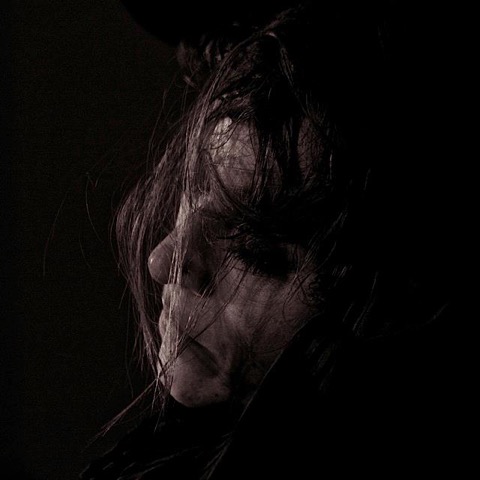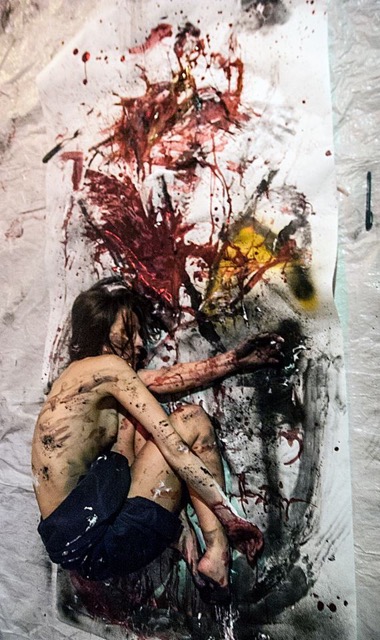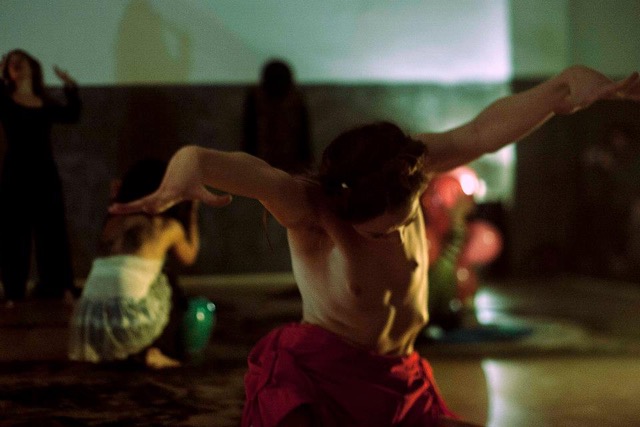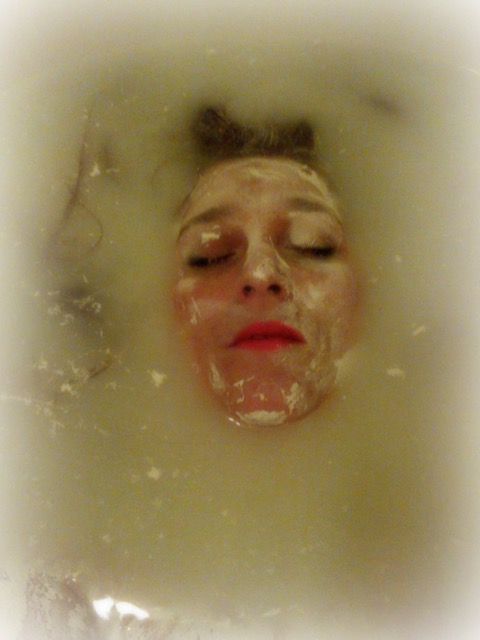Dødsgnist og livsangst av Tove- Elena Nicolaysen
Tittelen på performancen er “Dødsgnist og livsangst” og er inspirert av et dikt av den norske kunstneren Ane Barstad Solvang. Og musikken er komponert av Magnus Vanebo. Arbeidet er i progres og er en refleksjon rundt menneskeheten og samfunnet. Tove- Elena kommer fra en norsk mor og chilensk far, hun var barn i Bergen, ungdom i Grimstad, halv voksen i Oslo og modnet i Barcelona. I fjord kom hun “hjem” igjen, og dette har satt i gang en dyp og til tider vond undersøkelse av det norske. Et studie av gruppementalitet, og individualitet, valg og grenser.

"For thousands of years, this chaos has had the function of psychically subjecting man to the prevailing conditions of existence, of internalizing the external mechanization of life. It has served to bring about the psychic anchoring of a mechanized and authoritarian civilization by making man incapable of functioning independently.
The character structure of modern man, who reproduces a six-thousand-year-old patriarchal authoritarian culture is typified by characterological armoring against his inner nature and against the social misery which surrounds him. Nature and culture, instinct and morality, sexuality and achievement become incompatible as a result of the split in the human structure.

MAN IS FUNDAMENTALLY AN ANIMAL. Animals, as distinct from man, are not machine-like, not sadistic; their societies, within the same species, are incomparably more peaceful than those of man. The basic question, then is: What has made the animal, man, degenerate into a machine? Man has developed the peculiar concept that he is not an animal at all, but, well — man; a creature which long since has shed that which is "bad," which is "animal." He demarcates himself in all possible ways from the bad animal and points, in proof of his "being better," to culture and civilization which distinguish him from the animal. He shows, in his whole behavior, his "theories of values," his moral philosophies, his "monkey trials" and such, that he does not want to be reminded of the fact that basically he is an animal, an animal, furthermore, which has much more in common with the "animal" than with that being which he asserts to be and dreams of being.

Man shows by his maliciousness, his inability to live in peace with his kind, his wars, that what distinguishes him from the other animals is only his unbounded sadism and the mechanical trinity of the authoritarian concept of life, mechanistic science and the machine. If one looks at the results of civilization as they present themselves over long periods of time, one finds that these contentions of man are not only erroneous; more than that, they seem to be made expressly for the purpose of making man forget that he is an animal.
The cry for freedom is a sign of suppression. It will not cease to ring as long as man feels himself captive. As diverse as the cries for freedom may be, basically they all express one and the same thing: The intolerability of the rigidity of the organism and of themachine-like institutions which create a sharp conflict with the natural feelings for life. Not until there is a social order in which all cries for freedom subside will man have overcome his biological and social crippling, will he have attained genuine freedom." W. Reich
Web: Tove- Elena Nicolaysen
Facebook: Tove- Elena Nicolaysen Movement Artist
